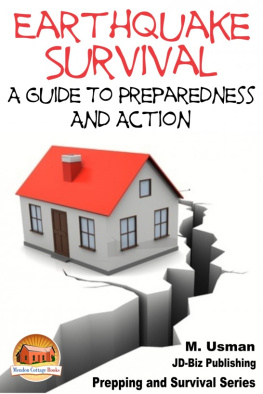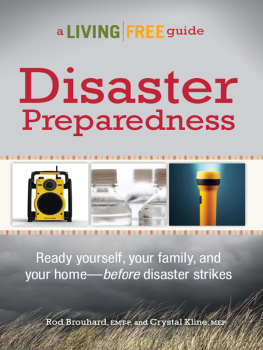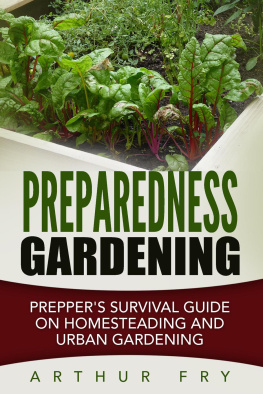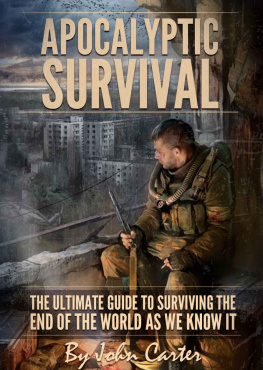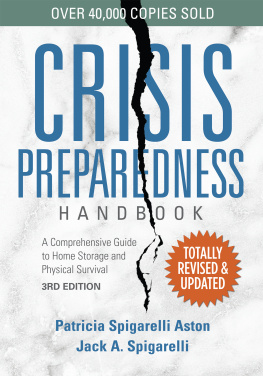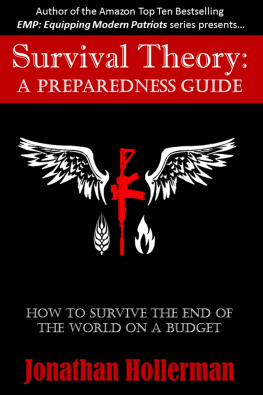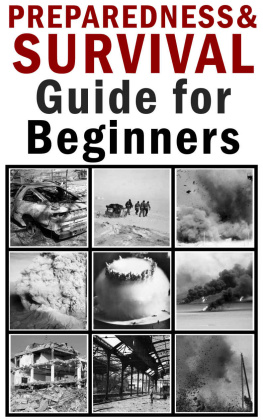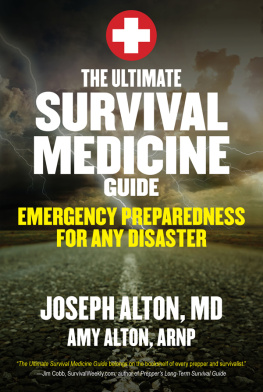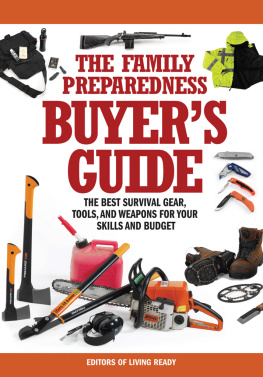Earthquake Survival
A Guide To Preparedness
And Action

Prepping and Survival Series
M. Usman
~~~
Smashwords Edition
Mendon Cottage Books

JD-Biz Publishing
All Rights Reserved.
No part of this publication may be reproducedin any form or by any means, including scanning, photocopying, orotherwise without prior written permission from JD-Biz CorpCopyright 2014
All Images Licensed by Fotolia and 123RF.
Disclaimer
The information is this book is provided forinformational purposes only. It is not intended to be used andmedical advice or a substitute for proper medical treatment by aqualified health care provider. The information is believed to beaccurate as presented based on research by the author.
The contents have not been evaluated by theU.S. Food and Drug Administration or any other Government or HealthOrganization and the contents in this book are not to be used totreat cure or prevent disease.
The author or publisher is not responsiblefor the use or safety of any diet, procedure or treatment mentionedin this book. The author or publisher is not responsible for errorsor omissions that may exist.
Smashwords Edition, License Notes
This ebook is licensed for your personalenjoyment only. This ebook may not be re-sold or given away toother people. If you would like to share this book with anotherperson, please purchase an additional copy for each recipient. Ifyoure reading this book and did not purchase it, or it was notpurchased for your use only, then please return to your favoriteebook retailer and purchase your own copy. Thank you for respectingthe hard work of this author.
Warning
The Book is for informational purposes onlyand before taking on any diet, treatment or medical procedure, itis recommended to consult with your primary health careprovider.
Table of Contents
Preface
Its natural to feel helpless against nature.I agree it is not a fair fight, but we can least give it a try.Combating earthquakes does not mean that you will have the power tooverturn it, but it does mean that you have the wit to minimizeyour losses, at least those that are somewhat in your hands.
This book tries to give you a thoroughinsight into the scenario of the earthquake. We begin by making yourealize that your reactions will always vary with your positionsand the steps that you have to take will be different in eachsituation.
Evacuation strategies are followed by theanalysis of scenarios, and then we introduce you to perhaps themost crucial thing in the moment of panic, organization. Yes, inmoments like these you need your mind to calm down and we have donethat for you. The lists are all given; all you need to do is towork on them and prearrange all your tools and aids.
We end by giving you all the common injuriesand their first aid helping mechanisms. I hope that with followingthese steps you can ensure the safety of your family and beunharmed by this monstrous calamity.
Chapter1 - Introduction
Earthquakes are the wrath of nature broughtdown upon humans. It is a natural catastrophe for which we do nothave a way out. No matter how much we spend or how much wespeculate, if this calamity strikes us with all its might all wecan do is to save ourselves and minimize the collateral damages itbrings.
Let us first have a look at why theseearthquakes enter our lives. Earthquakes are usually formed whenthe underground rocks suddenly break along a fault. The release ofenergy causes seismic waves that make the ground shake. The rockssplit and push each other till one of them breaks completelycausing the earthquake. The spot underground where the rocks breakis called focus. The place above the focus on ground is calledthe epicenter of the earthquake.
There are a lot of technical aspects to theprecautions that you can take for saving yourself and minimizingthe damages caused by the earthquake. We shall deal with them indue time during the course of this book, however let us start withthe primary focus here, learning how to survive the initial impactsof an earthquake.
Chapter2 - Surviving an Earthquake
Now, the duration of the earthquakes isusually not that lengthy, and needless to say, that it is a goodthing, because as the duration prolongs the damages occurred rise.As there is limited time, you may be at several different possibleplaces so we will try and guide you through pointers that you needto ensure in your particular location.
Inside apremisies
If you are inside, remain inside. DO NOTpanic and run outside or to other rooms during the shaking.
Do not worry about the falling debris. Inmost situations, you will reduce your chance of injury from fallingobjects and even building collapse if you immediately follow thesesteps:
Immediately drop down onto your hands andknees before the earthquake makes you stumble. Doing thisaction protects you from falling and simultaneously does notrestrict your movements so you can still try to move ifnecessary.
COVER your head and neck (and yourentire body if possible) under the shelter of a well-built table.If there is no shelter nearby, get down near an interior wall. Youcan also get near low-lying furniture that won't fall on you.Remember covering your head and neck with your arms and hands isthe most crucial task.
HOLD ON to your shelter or to yourhead and neck, depending on your situation, until the shakingstops. If your shelter is possible to carry around, be prepared tomove with it if the shaking shifts it around.
One of the key mistakes that people tend tomake is that they stand in the doorways and that is plain wrong. DONOT stand in a doorway. You are safer beneath a table. Ineveryday households, doorways are similar to any other part of thehouse when one considers their strengths and the chances of hurtingyourself are more there. The doorway does not protect you from themost likely source of injury, from the falling objects. Mostearthquakes related injuries and deaths are caused by fallingobjects or by being knocked to the ground. If prevent these, youare a survivor.
You can take other steps, even while anearthquake is happening, doing these will further drive you towardssafety:
If possible, within the few seconds beforeshaking increases, quickly move away from glass and hanging objectsor any large furniture that could fall. Watch carefully for fallingdebris like bricks from the chimneys or fireplaces, wall hangings,light fixtures, cabinets and high shelves with doors that couldswing open. Observation is the key here, if you lose focus you canend up doing more harm to yourself.
If available nearby, grab something toshield your head and face from falling debris. This is the scenarioin which you do not find a solid shelter.
If you are in the kitchen, quickly turn offthe stove. Then proceed to seek shelter.
If you are in bed, hold on and remainthere, using a pillow to cover your head. The chances of injurywhile remaining in bed are minimal. People have faced worseinjuries by trying to Improvise and rolling towards doorways,broken glass and debris have caused them to suffer in thiscase.
Outside thebuildings
Just as we advised you to stay inside if youare already there, similarly if you are outside, remain there andkeep your distance with the buildings, utility wires, sinkholes,and fuel and gas lines. One of the most dangerous places you canfind yourself is the exterior of a building. Windows, facades andarchitectural details are often the first parts of the building tocollapse. Shaking can be too strong for you and you may stumble andfall, failing to turn farther away from the threateningbuilding.

